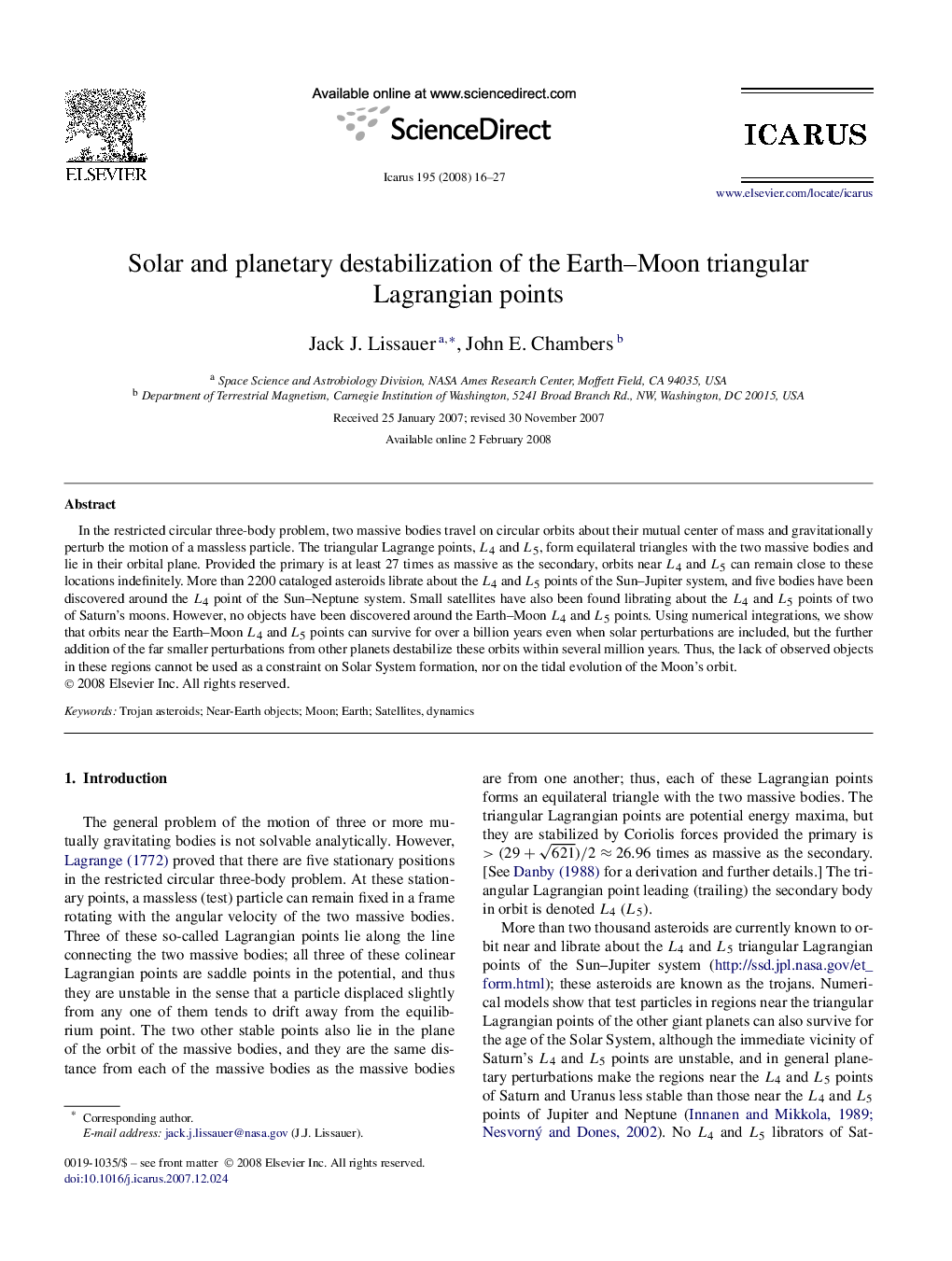| Article ID | Journal | Published Year | Pages | File Type |
|---|---|---|---|---|
| 1775060 | Icarus | 2008 | 12 Pages |
In the restricted circular three-body problem, two massive bodies travel on circular orbits about their mutual center of mass and gravitationally perturb the motion of a massless particle. The triangular Lagrange points, L4L4 and L5L5, form equilateral triangles with the two massive bodies and lie in their orbital plane. Provided the primary is at least 27 times as massive as the secondary, orbits near L4L4 and L5L5 can remain close to these locations indefinitely. More than 2200 cataloged asteroids librate about the L4L4 and L5L5 points of the Sun–Jupiter system, and five bodies have been discovered around the L4L4 point of the Sun–Neptune system. Small satellites have also been found librating about the L4L4 and L5L5 points of two of Saturn's moons. However, no objects have been discovered around the Earth–Moon L4L4 and L5L5 points. Using numerical integrations, we show that orbits near the Earth–Moon L4L4 and L5L5 points can survive for over a billion years even when solar perturbations are included, but the further addition of the far smaller perturbations from other planets destabilize these orbits within several million years. Thus, the lack of observed objects in these regions cannot be used as a constraint on Solar System formation, nor on the tidal evolution of the Moon's orbit.
